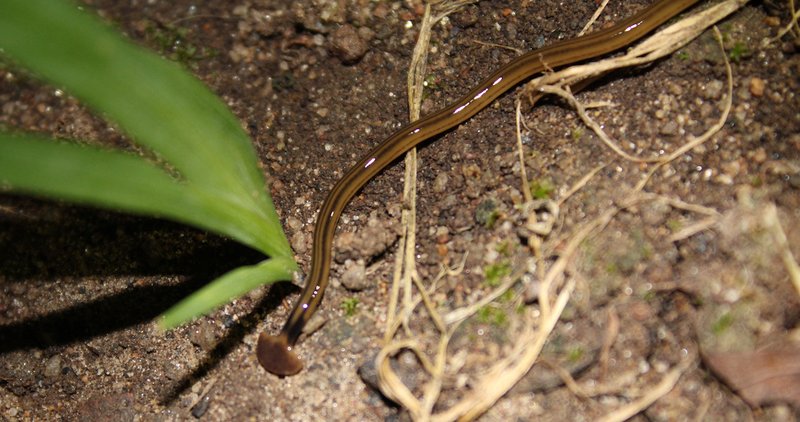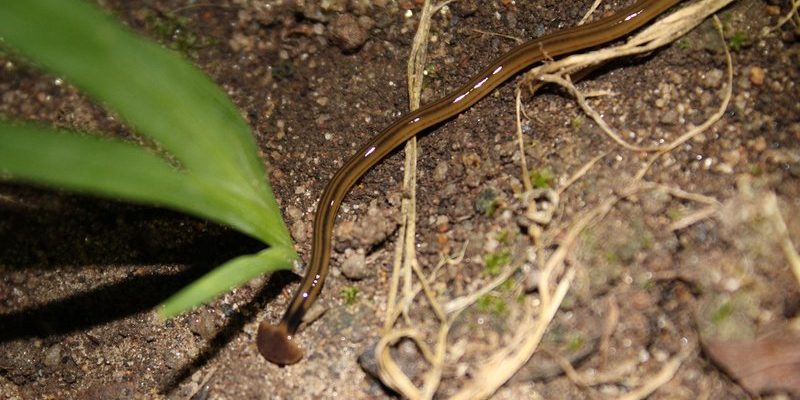
You might be wondering how these worms got their name. Well, their head shape resembles a hammerhead shark, which can be a little unsettling for gardeners. While they can look intriguing, their presence is a red flag. Hammerhead worms are predatory and can consume beneficial earthworms and other soil organisms. No one wants to see their hard work get disrupted, right? In this guide, we’ll dive into how to prevent hammerhead worm spread in raised beds, ensuring your garden remains a safe haven for your plants.
What Are Hammerhead Worms?
Before we jump into prevention, let’s get to know our unwelcome guests a bit better. Hammerhead worms belong to a group of flatworms known as **Geoplanidae**. These worms are typically found in tropical and subtropical regions, but they’ve been making their way into new territories, including the United States.
They’re usually brown or black and can grow quite large, sometimes up to a foot long. What makes them particularly concerning is their ability to reproduce through fragmentation. That means if you accidentally cut one in half, it can regenerate and turn into two new worms! A little like a sci-fi horror movie, right?
They thrive in moist environments, which makes raised beds an ideal home for them, especially if you’re generous with your watering. By understanding their nature, we can tackle ways to keep them out of our gardens effectively.
Signs of Hammerhead Worm Infestation
So, how do you know if hammerhead worms have invaded your raised beds? The signs aren’t always obvious, but a close inspection can reveal quite a bit. One telltale sign is finding them during the day, as they tend to be more active in moist, damp conditions. You might also notice a decline in your earthworm population, as hammerhead worms feast on these beneficial critters.
Another clue is when you see unusual trails or slime on the surface of the soil. You may think, “What’s that goo?” Well, it could be the residue left behind by a hammerhead worm. You can also look for their distinct, flat shape curling up when disturbed. If you spot any of these signs, it’s time to take action and assess how to prevent further spread.
Preventing Hammerhead Worm Spread
Now for the main event – how do we prevent these pesky worms from crashing our gardening party? Here are several strategies that you can implement:
- Keep Your Soil Healthy: A balanced, thriving ecosystem of beneficial organisms keeps hammerhead worms at bay. Add compost and organic matter to enrich the soil.
- Control Moisture Levels: While raised beds need water, overwatering can create a perfect breeding ground for these worms. Make sure your beds drain properly.
- Physical Barriers: Consider using mesh or landscape fabric on the bottom of your raised beds. This can keep worms from entering while allowing water to flow through.
Taking these simple steps can go a long way in maintaining a barrier against hammerhead worms, allowing your plants to flourish without interference.
Identifying Potential Introductions
Often, the introduction of hammerhead worms into your raised beds happens unknowingly. You might’ve bought soil, plants, or mulch that harbored these invaders. Here’s how to minimize that risk:
- Inspect New Additions: Always check new plants for any signs of pests, including hammerhead worms. Look closely at the soil, leaves, and stems.
- Buy from Trusted Sources: Purchase your soil and plants from reputable suppliers who follow strict pest control measures.
- Heat Treatment: If you’re adding soil or mulch from outside sources, consider heating it in the sun for a day to kill any lurking worms.
By being vigilant during the selection process, you can prevent hammerhead worms from hitching a ride into your garden.
How to Handle an Infestation
If you discover that hammerhead worms have already made themselves at home in your raised beds, don’t despair! There are ways to manage the situation effectively:
- Manual Removal: Wearing gloves, gently remove any visible worms you find, and dispose of them in a sealed bag. Be careful not to break them apart!
- Encourage Predators: Introduce birds or beneficial insects that can feed on hammerhead worms. Sometimes, nature’s allies can handle pests better than any chemical treatment.
- Wash Tools and Hands: After handling any soil or plants, be sure to wash your tools and hands to avoid spreading worms to new areas.
Quick action can help you regain control of your raised beds and keep hammerhead worms at bay.
The Role of Earthworms in Your Garden
Let’s take a moment to appreciate the good guys – earthworms! These little creatures play a vital role in maintaining soil health. They aerate the soil, improve drainage, and help with nutrient cycling. When hammerhead worms invade, they threaten the earthworm population, which can lead to poor soil health and, ultimately, a struggling garden.
Maintaining a stable environment for earthworms is crucial. By following preventive measures and being alert to signs of infestations, you contribute to a balanced ecosystem that will benefit your plants’ growth. Think of it as creating a thriving community in your garden – everyone has a role to play!
Long-Term Prevention Strategies
So, how do you ensure that hammerhead worms don’t return after you’ve managed an infestation? Here are some long-term strategies:
- Regular Monitoring: Make it a habit to check your raised beds regularly. Catching potential issues early can save a lot of work later.
- Rotate Crops: Changing what you plant in each bed year to year can disrupt the life cycle of pests, including hammerhead worms.
- Community Awareness: Share your knowledge with fellow gardeners! The more people know about hammerhead worms, the better chance you have of keeping them at bay.
These proactive steps will help you create a resilient garden that can ward off unwanted guests like hammerhead worms.
In the world of gardening, it’s essential to protect your growing plants from invaders like hammerhead worms. By understanding what these worms are, recognizing the signs of their presence, and implementing preventive measures, you can create a thriving, healthy environment for your garden. Remember, it’s all about balance – nurturing the good while keeping out the bad.
With a little attention and care, your raised beds can continue to be a place of growth and joy. So, roll up your sleeves and keep those hammerhead worms at bay! Happy gardening!

